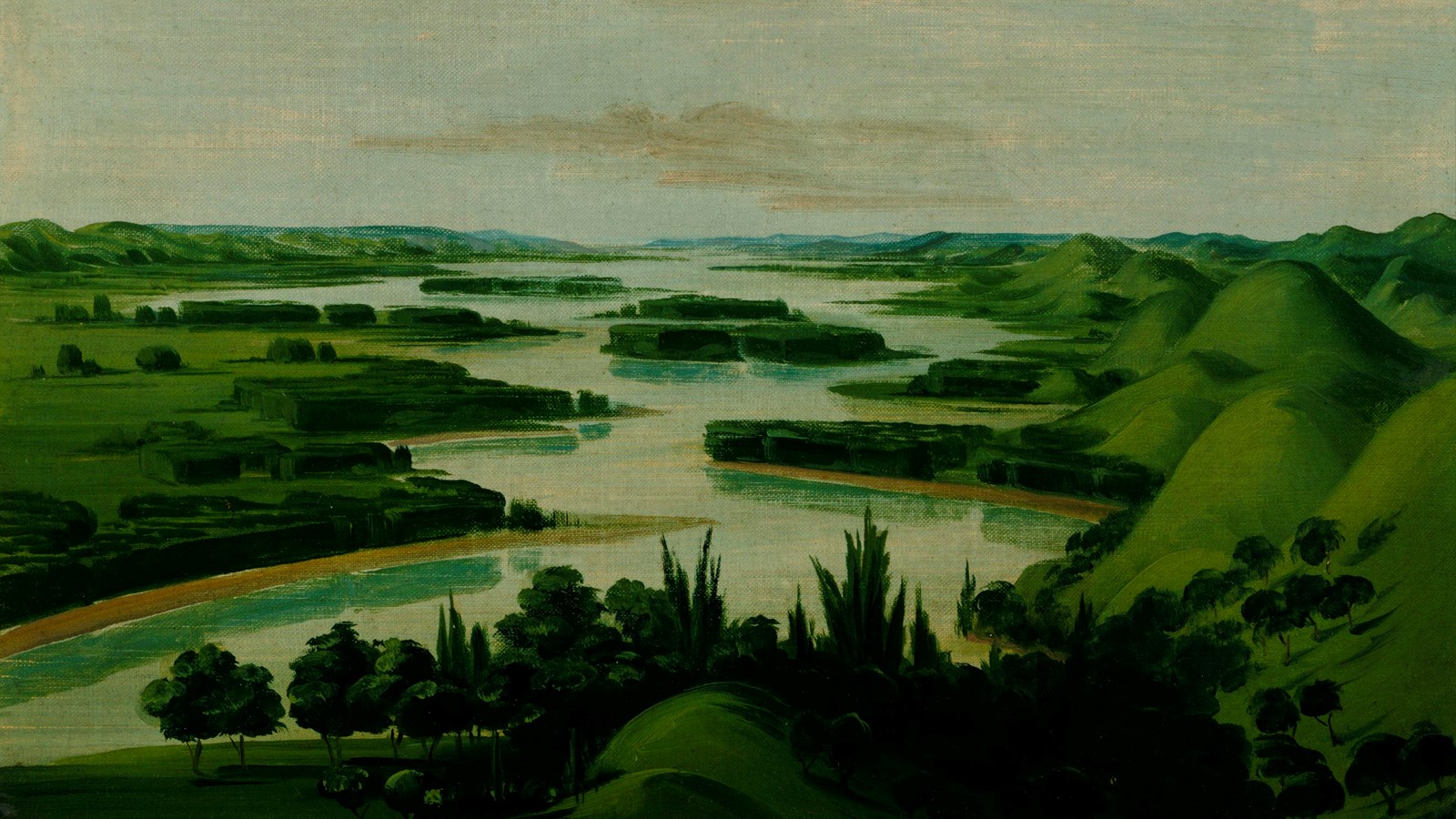Last updated: September 5, 2023
Place
Sergeant Floyd’s Death

George Catlin, View from Floyd's Grave, 1300 Miles above St. Louis, 1832, oil on canvas, Smithsonian
Benches/Seating, Historical/Interpretive Information/Exhibits, Information, Information Kiosk/Bulletin Board, Parking - Auto
Even the most adventure-seeking people might feel a little nervous leaving places that are familiar to them.
Members of the Lewis and Clark Expedition may have felt some of this uncertainty. Would they return to their families and their homes? Remarkably, all but one of the expedition survived. Sergeant Charles Floyd was the only expedition member to die en route.
Floyd was born in 1782 just outside Louisville, Kentucky. His father, Robert Clark Floyd, had served with George Rogers Clark, William Clark’s brother, in the American Revolutionary War. The two families kept in touch over the years. William Clark probably knew Charles Floyd as the constable of Clarksville, where Clark lived.
When it came time to recruit men for the expedition, Clark reached out to Floyd. Just twenty-one years old, he enlisted on August 11, 1803, along with several other young men from Kentucky. He was promoted to the rank of sergeant in April 1804.
Floyd fell ill sometime toward the end of July 1804. On July 31, he wrote, “I am verry Sick and Has ben for Somtime but have Recoverd my helth again.”178 The recovery was short lived. He became sick again on August 15 and “remained so all night.”
Diagnosed with “bilious colic” at the time, Floyd likely had a ruptured appendix. None of the members of the expedition had formal medical training, but Lewis and Clark did what they could for their ailing crew member. York was Floyd’s principal caretaker, and Clark helped care for Floyd during his last nights. Floyd died “with a great deel of composure” on the afternoon of August 20, 1804, after telling Clark that “he was going away and wished me to write a letter.”
On the day Floyd died, Clark wrote in his journal, “I am Dull & heavy.”
It cannot have been easy for Clark to watch his family friend die, especially so far from home and loved ones. After a brief funeral service, the expedition members buried Floyd on top of a hill overlooking the Missouri and surrounding plains. They marked the grave with a cedar post, onto which they engraved Floyd’s name.
Floyd’s death may have felt like a reality check for other members of the expedition. Who might be the next to die?
About this article: This article is part of series called “Pivotal Places: Stories from the Lewis and Clark National Historic Trail.”
Lewis and Clark NHT Visitor Centers and Museums
This map shows a range of features associated with the Lewis and Clark National Historic Trail, which commemorates the 1803-1806 Lewis and Clark Expedition. The trail spans a large portion of the North American continent, from the Ohio River in Pittsburgh, Pennsylvania, to the mouth of the Columbia River in Oregon and Washington. The trail is comprised of the historic route of the Lewis and Clark Expedition, an auto tour route, high potential historic sites (shown in black), visitor centers (shown in orange), and pivotal places (shown in green). These features can be selected on the map to reveal additional information. Also shown is a base map displaying state boundaries, cities, rivers, and highways. The map conveys how a significant area of the North American continent was traversed by the Lewis and Clark Expedition and indicates the many places where visitors can learn about their journey and experience the landscape through which they traveled.
